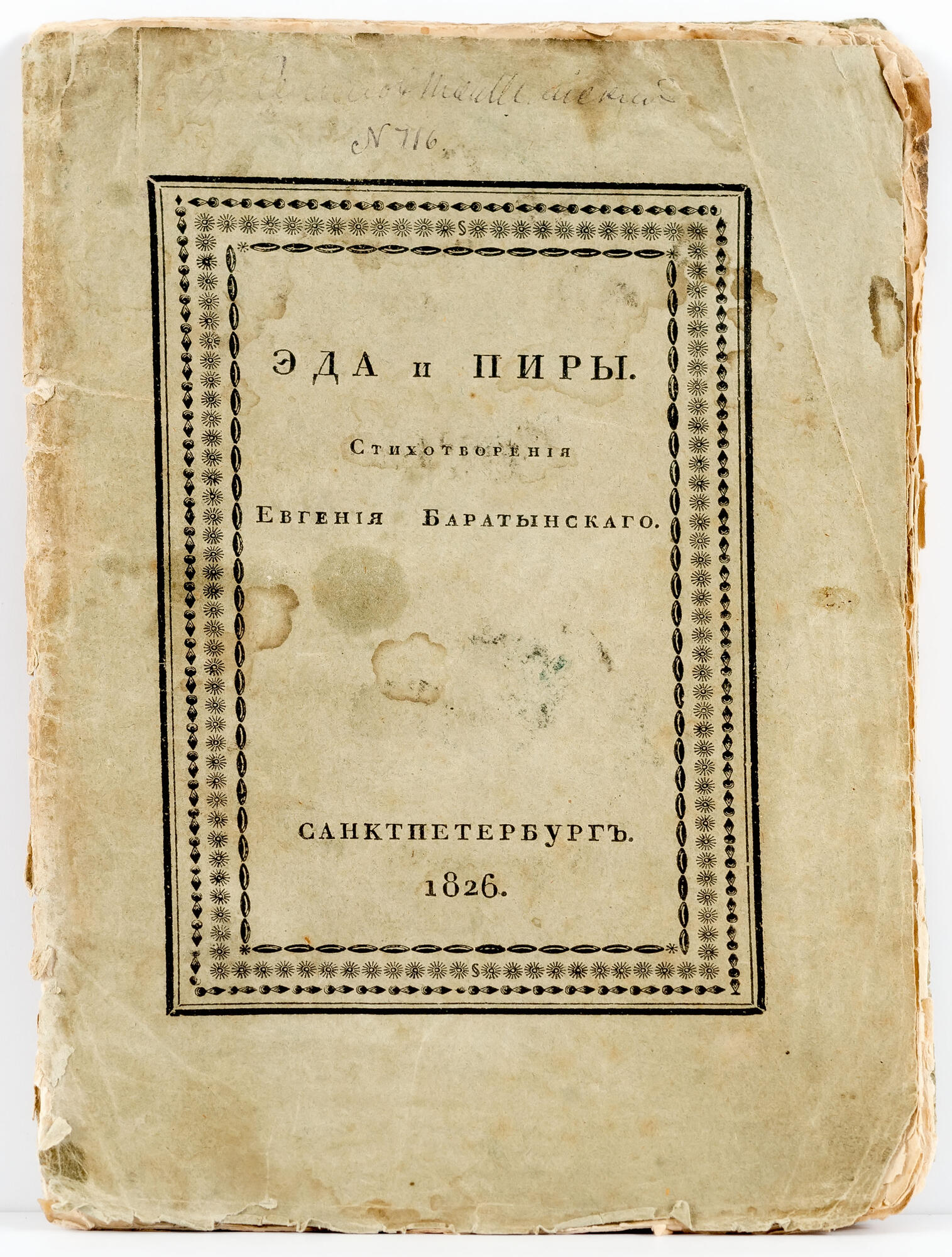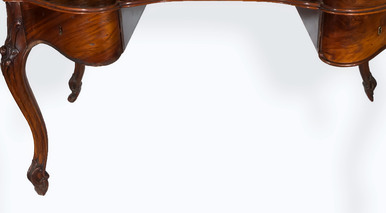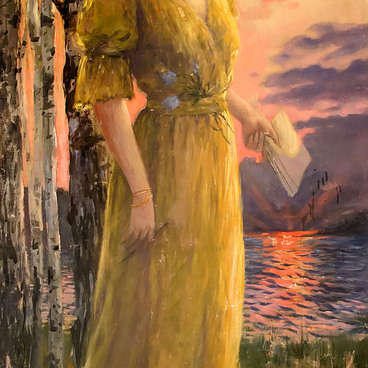In early February 1826, the first long-awaited book by Evgeniy Boratynskiy was published in Petersburg. This edition included two poems ‘Feasts’ and ‘Eda’ written during his military service in Finland in 1820-1825.
The criticism was more on the positive side, though not without comment. The critic Thaddeus Bulgarin wrote in his review in the newspaper ‘Northern Bee’: ‘"The Feasts’ is a pleasant literary toy in which the Author ironically celebrates the gastronomy and invites the Comus' lovers to enjoy the innocent pleasures of life. Pungency and good verses area abundant <…> In the novel “Eda” the descriptions of winter, spring, mountains and forests of Finland are beautiful. But in general the narrative does not that have that poetic, sublime, captivating simplicity, which astonishes us in the “The Captive of the Caucasus”, “The Gypsies” and “The Fountain of Bakhchisaray” by Alexander Pushkin’. Pushkin himself noted that the works of Boratynskiy are ‘a model of gracefulness, grace and feeling’.
The poem ‘Feasts’ describes a friendly pastime. It was first published in 1821 in the journal ‘The Competitor of Enlightenment and Beneficence’, but attracted the attention of the critics and the reading public when it came out with the poem ‘Eda’. In the new publication Boratynskiy significantly edited ‘Feasts’ and accompanied it by a preface: ‘This small poem was written in Finland. This is a capricious trife. The composer wrote it in a cheerful mood’.
The poem ‘Eda’ caused more violent controversy and mixed reviews from critics. Pushkin, for example, wrote: ‘Re-read this “Eda” (which our critics have called insignificant, for like children, they expect poems to be eventful), - re-read this simple, delightful story: you will see the depth of feeling it took to show a woman’s love development’.
On the back of the book from the collection of the museum it is stated: “For sale in the bookshop of I. SlEnin, for 5 rub. if by mail -- for 6 rubles”. The book shop of publisher and bookseller Ivan Slenin on Nevsky Prospekt was a place of frequent meetings of literary figures. Kuhelbecker, Delvig, Krylov, Gnedich were always here. This copy was donated to the museum by Kirill Pigarev, great-grandson of Fyodor Tyutchev, a famous literary scholar and museum figure.
On the publisher’s cover of the book above you can see the half-erased autograph of the outstanding Russian geographer and scientist Petr Semyonov-Tyan-Shansky. As a collector, he was known for his painting collection, which was transferred to the Hermitage in 1910. However, the literary part of his library also deserves attention.
The scientist donated part of his scientific book collection to the library of the Russian Geographical Society, while this copy ended up in the Petersburg Book Shop of writers and was sold there.
The criticism was more on the positive side, though not without comment. The critic Thaddeus Bulgarin wrote in his review in the newspaper ‘Northern Bee’: ‘"The Feasts’ is a pleasant literary toy in which the Author ironically celebrates the gastronomy and invites the Comus' lovers to enjoy the innocent pleasures of life. Pungency and good verses area abundant <…> In the novel “Eda” the descriptions of winter, spring, mountains and forests of Finland are beautiful. But in general the narrative does not that have that poetic, sublime, captivating simplicity, which astonishes us in the “The Captive of the Caucasus”, “The Gypsies” and “The Fountain of Bakhchisaray” by Alexander Pushkin’. Pushkin himself noted that the works of Boratynskiy are ‘a model of gracefulness, grace and feeling’.
The poem ‘Feasts’ describes a friendly pastime. It was first published in 1821 in the journal ‘The Competitor of Enlightenment and Beneficence’, but attracted the attention of the critics and the reading public when it came out with the poem ‘Eda’. In the new publication Boratynskiy significantly edited ‘Feasts’ and accompanied it by a preface: ‘This small poem was written in Finland. This is a capricious trife. The composer wrote it in a cheerful mood’.
The poem ‘Eda’ caused more violent controversy and mixed reviews from critics. Pushkin, for example, wrote: ‘Re-read this “Eda” (which our critics have called insignificant, for like children, they expect poems to be eventful), - re-read this simple, delightful story: you will see the depth of feeling it took to show a woman’s love development’.
On the back of the book from the collection of the museum it is stated: “For sale in the bookshop of I. SlEnin, for 5 rub. if by mail -- for 6 rubles”. The book shop of publisher and bookseller Ivan Slenin on Nevsky Prospekt was a place of frequent meetings of literary figures. Kuhelbecker, Delvig, Krylov, Gnedich were always here. This copy was donated to the museum by Kirill Pigarev, great-grandson of Fyodor Tyutchev, a famous literary scholar and museum figure.
On the publisher’s cover of the book above you can see the half-erased autograph of the outstanding Russian geographer and scientist Petr Semyonov-Tyan-Shansky. As a collector, he was known for his painting collection, which was transferred to the Hermitage in 1910. However, the literary part of his library also deserves attention.
The scientist donated part of his scientific book collection to the library of the Russian Geographical Society, while this copy ended up in the Petersburg Book Shop of writers and was sold there.



